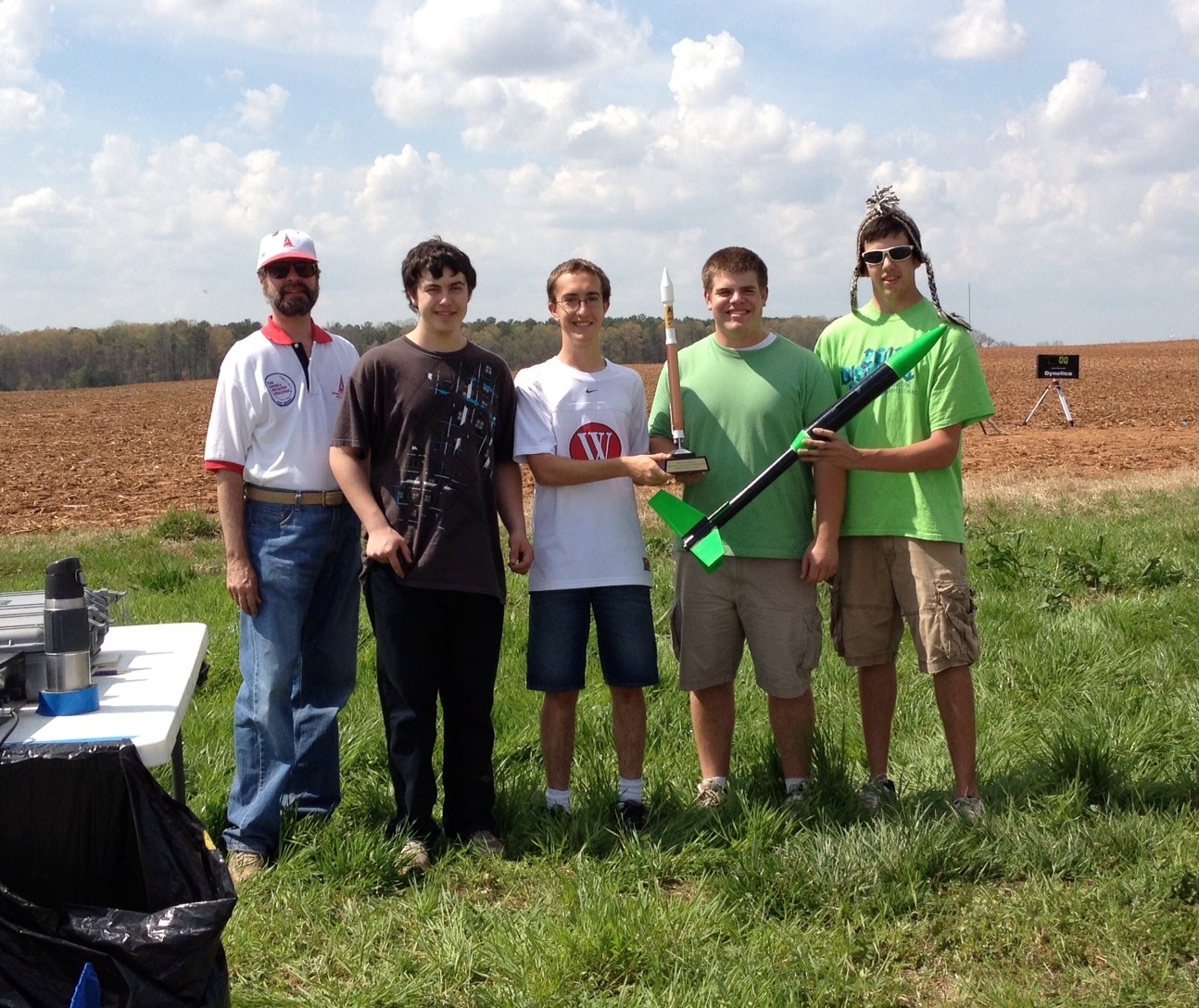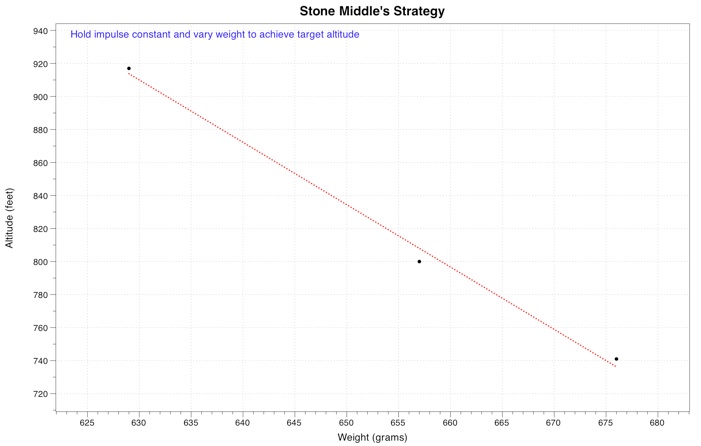by Vince Huegele
Westminster Christian Academy won the regional TARC contest March 17, 2012 in the best attended launch since HARA began hosting the event at Bragg’s farm. Westminster Christian has been in TARC since 2006 with only modest results each year, but this team scored a ‘4’ for a school record. These points are likely good enough for an invitation to the finals in Virginia, May 12.

A TARC rocket sits on the pad in the last second before lift off
Westlawn Middle School took second place and Williams Middle was third. Ten teams from seven schools participated and flew their egg carrying rockets in unseasonably warm and calm skies. This was twice the number of teams that came out last year so we thank everyone for supporting this very successful launch. There were a total of twenty-five TARC flights, most of which were for practice but ten were formal qualification attempts. Six flights were successful and scored points.

Liberty Middle 1 and Ridgeland High of Rossville, Ga. made practice flights only. Ridgeland’s second flight was great and would have been a ’27,’ but rocket damage in a subsequent flight kept them from attempting points. Madison Academy had parachute deployment problems and Bob Jones had an uncooperative altimeter.
All capsules contained two eggs and had to be flown on an “F” motor or less. The target altitude was 800’ but those flights that hit the 43-47 second duration window were rewarded with a zero time deduction.

This year’s trophies
The trophies were beautiful models donated by United Launch Alliance and were awarded to the top three places. Over seventy people were on hand to watch the launches. Vince Huegele and Bill Cooke provided the local officiating to qualify the flights as well as mentoring the teams throughout the year. Teams have until the deadline on April 2 to complete their qualification attempts.

Vince Huegele presents the first place award to Westminster Christian Academy team members Charles Nottingham, Nicholas Kromann (Team Lead), Ben Cyr, and Shane Nelson.
Ray Cole and David Bishop also had the HARA range set up for whatever members wanted to fly. There were 27 sport flights, nine of which were HP and three of them L1 certification attempts.

A Madcow Patriot takes to the skies on an I motor










 The 2009 TARC season is essentially over; all that’s left is the Nationals at Manassas on May 16, where once again Stone Middle will represent the state of Alabama. It’s a triumph for their team, who made good use of a simple, effective strategy.
The 2009 TARC season is essentially over; all that’s left is the Nationals at Manassas on May 16, where once again Stone Middle will represent the state of Alabama. It’s a triumph for their team, who made good use of a simple, effective strategy.

